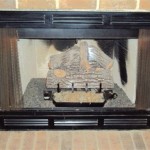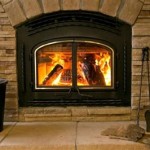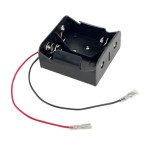Stone Mantels for Gas Fireplaces: Aesthetics, Safety, and Installation Considerations
Gas fireplaces offer a convenient and efficient alternative to traditional wood-burning fireplaces. They provide instant heat, require minimal maintenance, and eliminate the need for firewood storage. Enhancing the aesthetic appeal of a gas fireplace often involves the installation of a mantel. Stone mantels, in particular, are a popular choice due to their natural beauty, durability, and ability to complement various architectural styles. This article examines the considerations surrounding stone mantels for gas fireplaces, focusing on material selection, safety regulations, installation procedures, and design integration.
Material Selection: Types of Stone and Their Properties
The selection of the appropriate stone material is crucial for the successful integration of a mantel into a gas fireplace setup. Various types of stone are available, each possessing unique characteristics in terms of appearance, durability, and heat resistance. Common choices include:
Granite: Granite is an igneous rock known for its exceptional hardness, strength, and resistance to heat. It is available in a wide range of colors and patterns, making it a versatile option for various design schemes. Granite is relatively non-porous, making it resistant to staining and easy to clean. Its high density contributes to its heat-retaining properties, allowing it to radiate warmth for a prolonged period after the fireplace has been turned off.
Marble: Marble is a metamorphic rock prized for its luxurious appearance and intricate veining patterns. It is softer than granite and more susceptible to scratching and staining. However, marble's aesthetic appeal often outweighs these drawbacks, particularly in formal or traditional settings. Marble is a good conductor of heat, but its porous nature requires sealing to prevent damage from spills and moisture.
Limestone: Limestone is a sedimentary rock composed primarily of calcium carbonate. It is generally softer and more porous than granite and marble, offering a more rustic and textured appearance. Limestone's neutral color palette makes it a versatile option for various design styles. It is relatively easy to shape and carve, allowing for intricate detailing and customization. Limestone requires regular sealing to protect it from staining and weathering.
Slate: Slate is a metamorphic rock known for its layered structure and natural cleft finish. It is relatively durable and resistant to heat, making it a suitable option for fireplace mantels. Slate's dark, earthy tones and textured surface create a rustic and contemporary aesthetic. It is relatively non-porous and easy to clean, requiring minimal maintenance.
Cast Stone: Cast stone is a manufactured product that replicates the appearance of natural stone. It is typically made from a mixture of cement, aggregates, and pigments. Cast stone offers greater design flexibility and can be molded into various shapes and sizes. It is generally more affordable than natural stone and offers comparable durability. However, cast stone may not possess the same natural variations and character as genuine stone.
The choice of stone material should be influenced by factors such as the desired aesthetic, the overall design of the room, the budget, and the specific requirements of the gas fireplace unit.
Safety Regulations and Clearances for Gas Fireplaces
Safety is paramount when installing a stone mantel above a gas fireplace. Adhering to safety regulations and maintaining proper clearances is crucial to prevent fire hazards and ensure the safe operation of the fireplace. Building codes and manufacturer's instructions typically specify the minimum distances required between the fireplace opening and combustible materials, including the mantel. These clearances are designed to prevent the mantel from overheating and potentially igniting.
The National Fire Protection Association (NFPA) publishes standards and codes related to the safe installation of fireplaces and heating appliances. Local building codes may also have specific requirements that must be followed. It is essential to consult with a qualified building inspector or fireplace professional to ensure compliance with all applicable regulations.
The distance between the top of the fireplace opening and the bottom of the mantel is a critical measurement. This distance is typically specified in the fireplace manufacturer's installation manual. The type of gas fireplace unit, the BTU output, and the mantel material all influence the required clearance. Some gas fireplaces may require a non-combustible shield to be installed above the fireplace opening to protect the mantel from excessive heat. This shield can be made of materials such as metal, cement board, or fire-resistant drywall.
Improper installation of a mantel can create a fire hazard and void the fireplace warranty. It is crucial to carefully follow the manufacturer's instructions and consult with a qualified professional to ensure that all safety requirements are met.
Installation Procedures and Structural Considerations
The installation of a stone mantel requires careful planning and execution to ensure structural integrity and aesthetic appeal. The weight of the stone mantel must be adequately supported to prevent sagging or collapse. The supporting structure typically consists of wooden or metal framing that is attached to the wall studs or masonry. The framing must be strong enough to bear the weight of the mantel and any decorative items placed on it.
The installation process generally involves the following steps:
- Preparation: The wall surface must be clean, level, and free of any obstructions. Any existing trim or molding should be removed. The location of the wall studs should be identified using a stud finder.
- Framing: A wooden or metal frame is constructed to support the mantel. The frame should be securely attached to the wall studs using screws or nails. The dimensions of the frame should be slightly smaller than the overall dimensions of the mantel.
- Mounting Hardware: Mounting hardware, such as brackets or cleats, is attached to the frame and the back of the mantel. The type of hardware used will depend on the weight and design of the mantel.
- Installation: The mantel is carefully lifted into place and secured to the frame using the mounting hardware. Shims may be needed to ensure that the mantel is level and plumb.
- Finishing: The gaps between the mantel and the wall are filled with caulk or grout. The surface of the mantel is cleaned and sealed, if necessary. Decorative trim or molding can be added to enhance the appearance of the mantel.
For heavy stone mantels, it is recommended to consult with a structural engineer to ensure that the supporting structure is adequate. The engineer can assess the load-bearing capacity of the wall and recommend appropriate framing and mounting techniques. The proper installation of a stone mantel is essential for both safety and aesthetic reasons. A poorly installed mantel can be structurally unsound and detract from the overall appearance of the fireplace.
Specific gravity and hardness are two more important properties to consider. Specific gravity measures the density of a material, while hardness measures a material's resistance to scratching and abrasion. Stone mantels often experience wear and tear from regular use, so choosing a material with a higher hardness rating will ensure longevity.
When incorporating stone mantels into gas fireplace designs, it is important to consider the overall aesthetics of the room. The style of the mantel should complement the architectural style of the home. For instance, a sleek granite mantel may be appropriate for a modern home, while a rustic limestone mantel may be fitting for a traditional farmhouse. The color and texture of the stone should also be chosen to complement the existing décor.
The size of the mantel should be proportional to the size of the fireplace and the room. A mantel that is too small may look insignificant, while a mantel that is too large may overwhelm the space. The height of the mantel should also be considered. A mantel that is too high may be difficult to reach, while a mantel that is too low may be a safety hazard.
Stone mantels can be customized to create a unique and personalized look. They can be carved with intricate designs, painted with decorative patterns, or embellished with metal accents. These customizations can enhance the aesthetic appeal of the mantel and make it a focal point of the room.
The incorporation of a stone mantel into a gas fireplace design significantly enhances the aesthetic value of a room. It provides a focal point and can be customized to complement various architectural styles and interior designs. However, it is crucial to prioritize safety considerations and adhere to building codes and manufacturer guidelines during the installation process. Selecting the appropriate stone material, ensuring proper clearances, and implementing sound structural support are essential for a successful and safe fireplace installation. Engaging qualified professionals, such as building inspectors, fireplace technicians, and structural engineers, can further ensure compliance with regulations and the long-term performance of the installation.

Stone Mantels Hearth Home

Gas Fireplace Mantels With Tv Above Cabin Mantel

Fireplace Mantels For Buy Custom Chimney Usa Omega

Fireplace Mantels Stone Facing Chadds Ford Fireside

Fireplace Mantels For Buy Custom Chimney Usa Omega

Fireplace Mantels Surrounds Best Fire Hearth Patio

Fireplace Mantels Stone In Chalfont Pa Ambler Patio

Fireplace Mantles Nickos Chimney Company

Fireplace Mantels Three Questions To Consider The Cultured Stoners

Chiseled Stone Series 6 Mantel Grey Capo Fireside
Related Posts








